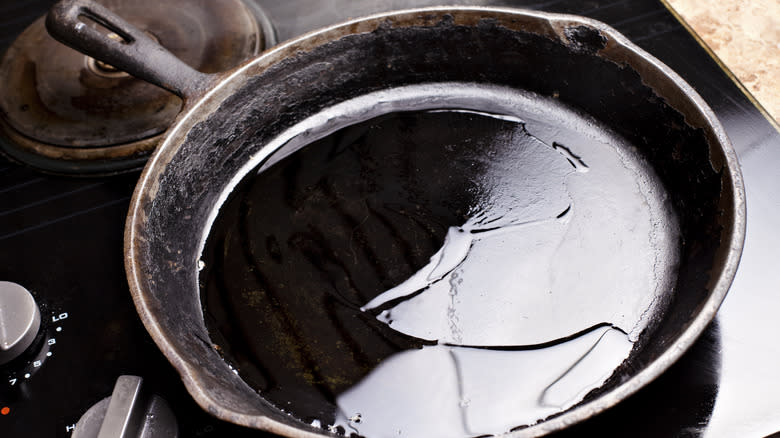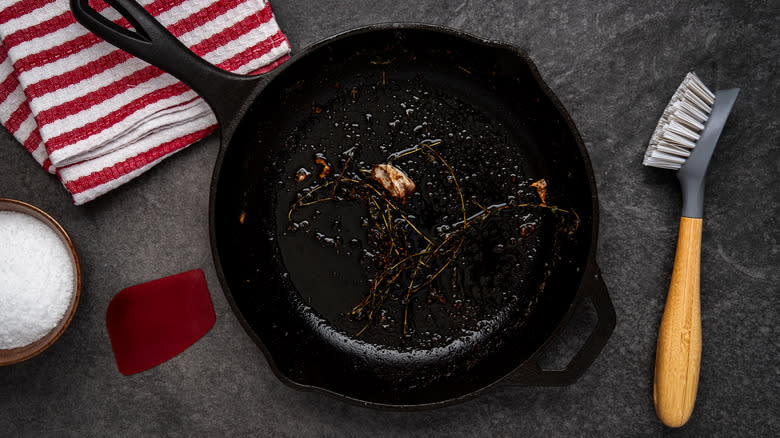The Reason Your Cast-Iron Skillet Is So Annoyingly Sticky

Owning cast-iron cookware is a wonderful thing. It also comes with its fair share of responsibility. As anyone who cares for these reliable, long-lasting, efficient heat conductors knows, it's nothing short of sacrosanct to wash and store a cast-iron pan in the same way you would a stainless steel or nonstick pan.
Because of its porous nature, cast iron needs to be seasoned with oil after it's washed and dried. At high enough temperatures, the fat transforms from a liquid to something more viscous in a process called polymerization, allowing it to bond to the iron and condition the pan, leading to a nearly nonstick surface over time.
However, diligent seasoners might notice that their cast-iron pans are coated in a sticky residue that won't come off after washing. If that's the case, the culprit might be overseasoning. Not to fear: Unlike some sticky situations, this one comes with a simple solution.
Read more: 11 Tips For Keeping Your Grill Shiny And Clean
Turn Up The Heat

If you find that your cast-iron pan is perpetually sticky, consider this your official green light to ignore those who condemn using dish soap on the material — one of many myths about caring for cast-iron — and reach for the Dawn. As long as you steer clear of harsh steel wool scrubbers until after you've rinsed the soap, using a small amount of suds with hot water is totally okay and may help rid your pan of that scummy extra layer of oil.
If that doesn't do the trick, you may need to start fresh with your seasoning process. Place your clean, dry pan upside down in a 450 to 500 degrees Fahrenheit oven with a sheet of foil on the rack below. After an hour or so, you should notice that some of that excess oil has dripped onto the foil. Still sticky? Repeat the process as many times as necessary. It might sound like a lot of work, but it's worth it for a perfectly seasoned pan.
Live And Learn

As much as cast iron loves to drink up fat, using too much oil when you're seasoning can prevent it from fully polymerizing, resulting in that sticky residue that traps food and other gunk. To avoid future stickiness, opt for a light layer of oil. A little goes a long way in conditioning your cast-iron skillet. Start with a small drizzle of vegetable or canola oil and rub it into the pan in circular motions with a clean paper towel. The surface should be shiny, but you shouldn't be able to mark a trail in the oil with your finger. If necessary, wipe away any excess.
Minding your oil when you're cooking can also help safeguard against sticky pans. In most cases, you should only need about ? of a teaspoon of oil to coat a well-seasoned pan. Unless, of course, you're deep-frying a chicken leg, in which case you'll just need to be extra diligent about wiping away excess oil when you're cleaning.
Read the original article on Daily Meal.